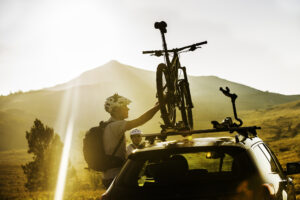Cycling is more than just a hobby for many people, especially those who spend most of their free time riding. At some point in everyone’s riding career, the question passes through their minds – should they compete in road races? The answer to this question is very personal, but many feel that they won’t quite know if they like it until they try it.
Let’s say you’ve decided to go for it. You’ve been training for your first road race and you’re almost ready. Don’t forget to get your bike prepared, as well! Here’s a look at some things you can do – you can either do them yourself or get your local bike shop to assist you:
Consider Making Some Upgrades
Before you start training, you should consider making some upgrades to your equipment, such as your derailleur pulleys or bottom brackets. These are things that can help you ride more efficiently. If you do this, you should replace the parts well before you start training so that you can get used to your upgrades.
Clean Your Bike
Before making any mechanical adjustments, start with a clean bike. Dirt and grime can hide potential problems and make maintenance more difficult. Use bike-specific cleaners or mild soap and water. Pay special attention to the drivetrain, wheels, and frame. Cleaning your bike also gives you a chance to closely inspect it for any signs of wear or damage.
Perform Some Bike Maintenance
You should perform some maintenance on your bike before race day. Here’ are some things you can do (or you can have an expert at your local bike shop do):
Inspect the Frame and Fork
Look for any cracks, dents, or other damage to the frame and fork. Even minor damage can compromise the bike’s integrity, especially under race conditions. If you find anything concerning, consult a professional mechanic.
Check the Drivetrain
The drivetrain includes the chain, cassette, chainrings, and derailleurs. Ensure your chain is clean and properly lubricated. A worn-out chain can cause inefficient shifting and increased wear on other components. Use a chain checker tool to measure wear. If the chain or cassette is worn, replace them.
Inspect the derailleurs for proper alignment. Shifting should be smooth and precise. Adjust the limit screws and indexing as necessary. Also, check the cables for fraying or corrosion and replace them if needed.
Examine the Brakes
Brakes are crucial for safety and control. Check the brake pads for wear and replace them if they’re thin. Ensure the brake calipers are centered and the cables are in good condition. Adjust the brake levers so they engage the brakes properly and comfortably. Test the brakes to make sure they provide adequate stopping power.
True the Wheels
Wheels should be perfectly round and true. Spin the wheels and look for any wobbles. If you notice any deviation, adjust the spoke tension or take the wheels to a professional mechanic. Check for any cracks or damage to the rims. Ensure that the quick-release skewers or thru-axles are properly tightened.
Check the Tires
Inspect your tires for cuts, abrasions, or embedded debris. Tires with significant wear or damage should be replaced. Make sure the tires are properly inflated to the recommended pressure. This reduces the risk of flats and ensures optimal performance. Consider using new or lightly used tires for race day to avoid unexpected punctures.
Test the Bearings
Check the bearings in your wheels, bottom bracket, headset, and pedals. Spin each component and feel for smoothness and play. Rough or loose bearings indicate they need to be serviced or replaced. Properly functioning bearings ensure efficient power transfer and handling.
Adjust the Saddle and Handlebars
Ensure your saddle height and angle are correctly set to avoid discomfort and injury. Your handlebars should also be adjusted for optimal comfort and control. Make sure the handlebar tape is secure and provides good grip.
This preparation will make sure your bike is ready to go. Between that and your training, you should be well prepared!
Share this post:


